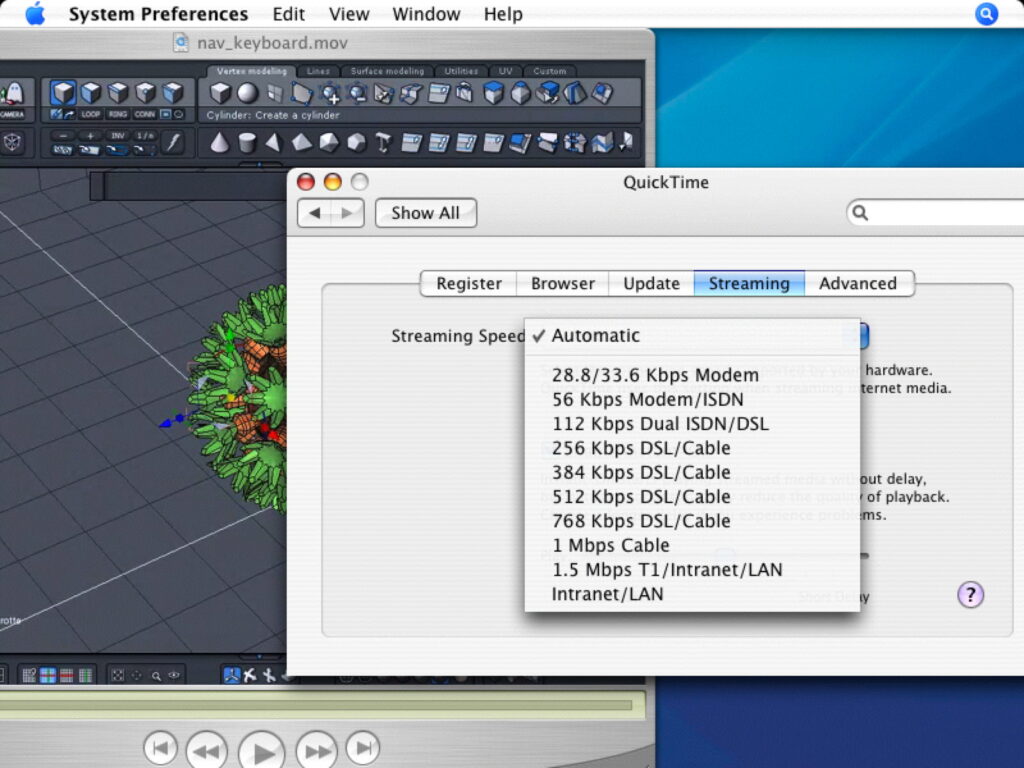A brief history of QuickTime

We all know about the Desktop Publishing revolution that the first Macs and their PostScript LaserWriter printers brought in the late 1980s, but many have now forgotten the Desktop Video revolution that followed in the next decade. At its heart was support for multimedia in Apple’s QuickTime.
QuickTime isn’t a single piece of software, or even an API in Classic Mac OS, but a whole architecture to support almost any media format you could conceive of. It defines container and file formats for multiple media types, forming the basis for the MPEG-4 standard, extensible encoding and decoding of a wide variety of media using Codecs, and more.
QuickTime development was initially led by Apple’s Bruce Leak, who first demonstrated it at the Worldwide Developers Conference in May 1991 before its release as a separate set of components for System 6 and 7 in December that year. Initially it came with just three Codecs, supporting animated cartoons, regular video and 8-bit still images. Cinepak video and text tracks were added in QuickTime 1.5 the following year, when high-end Macs were capable of playing 320 x 240 video at 30 frames/s, which was groundbreaking at the time.
By the mid-1990s QuickTime was starting to flourish. Hardware support included Apple’s new PowerPC Macs in 1994, and MIDI devices, PCs running Windows, MIPS and SGI workstations. QuickTime VR (for Virtual Reality) allowed the user to navigate the virtual space within panoramic images. QuickTime media were being licensed and distributed on CD-ROMs, innovative games such as Myst depended on it, and the QuickTime project brought in revenue to Apple at a time that it was most needed.
That period also brought conflict. Apple had contracted San Francisco Canyon Company to port QuickTime to Windows, but Intel also hired them to develop a competing product, Video for Windows. Source code developed for Apple ended up in Intel’s product, resulting in a lawsuit in 1994, finally settled three years later.
QuickTime was enhanced through the late 1990s, with version 5 the first to support Mac OS X, and just over a year later, in 2002, that was replaced by version 6. The following year, QuickTime 6.2 only supported Mac OS X, with a slightly older version for Windows.
QuickTime was one of the more used parts of what was then named System Prefs, here seen setting the MIME types to be handled by the QuickTime Plug-in, in 2002.
For most Mac users, bundled QuickTime Player was the standard way to play most types of video, as seen here in 2002.
Apple built apps like iMovie on the strengths of QuickTime. First released in 1999, iMovie is seen here in 2002.
QuickTime version 7 was both the first and last to use the QuickTime Kit (QTKit) Framework in Cocoa.
Apple’s flagship movie editing suite Final Cut Pro started as KeyGrip by Macromedia, but was first released by Apple in 1999; this ‘HD’ was actually version 4.5 in 2004.
Streaming movies in those days (here 2005) had to cope with a range of relatively low transfer rates, down to 56 Kb/s over a fast dial-up connection with a modem.
Users had to pay a small fee to upgrade QuickTime Player to the Pro version, unlocking more features including extensive transcoding options, here in 2007.
Mac OS X Server included a QuickTime Streaming Server, and a separate app, QuickTime Broadcaster (seen here in 2007), could be used to deliver real-time audio and video over a network.
QuickTime X for Mac OS X 10.6 Snow Leopard in 2009 marked the start of its slow decline, with the removal of support for some media formats, most noticeably MIDI. Internally, it had been converted to a Cocoa framework, AVFoundation, with modern 64-bit audio and video Codecs. This anticipated discontinuation of all support for 32-bit code in macOS Catalina. The impact on Codecs that were never ported to 64-bit is still felt today. While QuickTime is still alive in the AVFoundation framework, it’s very different now from its heyday in the opening years of this century.
By 2011, QuickTime Player was a shadow of its former self, and a far cry from its earlier Pro version.
Its pane in System Preferences, here in Panther of 2015, didn’t reflect the inner changes.
This is iMovie in 2011.
Further reading
Wikipedia, good on version details
AppleInsider, long and detailed account by Prince McLean in 2007
Computer History Museum, good background from Hansen Hsu, with a link to YouTube video from three of the creators of QuickTime.